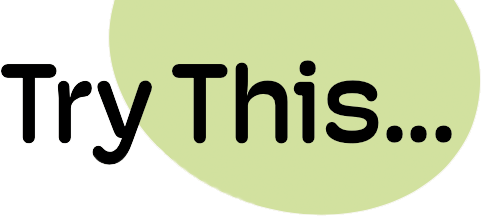Here’s an exciting teaching sequence, created using the ‘Read a Sign’ key. The context springs from some kind of ‘sign’ that students can read meaning into. In this case it’s two simple words written on the board, or a large piece of paper: “TOP SECRET”. Students begin by imagining the sort of place these words might describe. Then they think about the kind of people who might work in such a setting, and the security set up it would require. This is a highly engaging context, especially for those with a love of action and adventure. It’s one you can really trust to build buy-in from the class: there’s so much in it to light up the imagination. It’s great fun for the teacher too. Why not give it a go with your students and see for yourself!
A note on planning
I first saw Tim model this sequence with a year 5-6 class in Auckland. A few weeks later I was working with another group of year 5-6s in Northland and looking for ideas to hook them into a local history unit. The curriculum learning involved a real WW2 military base that once occupied the site of their school. With a little tweaking of the context, Tim’s sequence provided a great way in. It was pleasing to see every student in the class fully engaged. And as you’ll see in step 7, we were even able to bring in spelling! The photos are from Tim’s teaching in Auckland, the planning sequence is the Northland version.
Context

Method
- Bring class together
- Start by reading the narrative text prepared in advance
We’re deep in the Northland countryside. It’s late at night. The light from the moon picks out something silver glinting in the darkness of the trees. Is it metallic? Everything seems quiet apart from the sound of crickets and the call of a morepork. The wind stirs and there is a slight vibration underground. It’s not an earthquake … It seems there is some kind of human activity happening under our feet!
- Share the sign with the students
Wrote on a piece of paper ‘TOP SECRET’.
- Ask ‘what do you make of this? Give time for discussion.
Prompts included ‘What do those words mean?’ Why ‘top’? Where might a sign like this be found?
- Introduce an element of tension
What’s the most top secret thing that might be stored in a file with this on the front?
- Give the students a task
Invited students to stand up. Revisited the opening text to establish the idea of the top secret base – possibly hidden underground in the local area. Asked them ‘if we were the people charged with looking after this secret base, what qualities would we need to have?’ Invited them to think about the security system that would be required. Then to break into pairs and enact the testing of that system – one person being the person coming to work at the base, the other being the security system.

Through negotiation, the class agreed the system would need to have a minimum of 3 levels of security. Students worked on this enactively for a while, through play. Then as a whole class we ‘tested’ the security system. As each pair demonstrated their security system to the class, I used teacher-in-role voice as a high status figure barking orders and managing the security checks “security level 3, ready? Check now! Report…!”

- Use the activity as an opportunity to develop other areas of the curriculum
After some discussion and reflection, students were invited to make a written report on their security system check. This was framed as something to be sent to the Chief of the military base. This was an opportunity to check spelling accuracy for words like ‘malfunctioning’ ‘check’ ‘facial recognition’ ‘security’ etc. All students were engaged in the writing and re-editing of their work. When finished, reports were ritually ‘submitted’ via placing on the teachers’ desk.
- Students might later record these events as a chronological record or diary entry (this step was folded in to step 7)

Ideas for further development
After spending some time exploring the context through other keys (for example ‘create a drawing’ to depict the upper and lower levels of the imaginary spy base), links could be drawn with the real world, local history context e.g. “Here’s the thing … Back in World War 2 there was a REAL military base right where we are standing now. It wasn’t quite the same as the one we created in our stories, but there were parallels. The real base was kept hidden from the road, it was used for top secret purposes, it had security systems for people going in and out, and it was staffed by a team of highly trained experts. Shall we find out more?”
